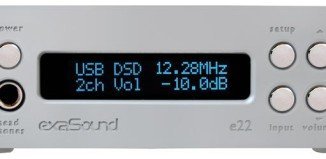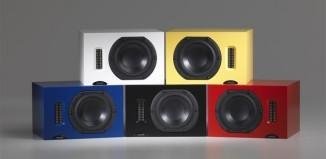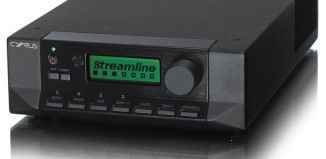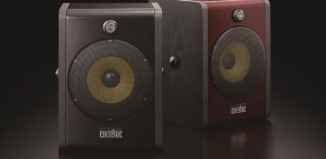
How many remotes do you have to grab and how many buttons do you have to press in order to watch a DVD at your house?
The Harmony Advanced Universal Remote for Xbox 360 is designed to provide video gamers and home entertainment enthusiasts with a single remote for all their entertainment needs. It features dedicated Xbox 360 buttons and comes preprogrammed from Logitech to control the latest generation console. The Harmony remote for Xbox 360 can control virtually any device with an infrared receiver, up to 12 devices in all.
A typical universal remote is capable of controlling many devices but is usually difficult to set up and requires pressing an elaborate sequence of buttons. Additionally, many universal remotes work with only a limited number of popular devices for which codes were preprogrammed into the remote at the time of manufacturing. So what separates the Harmony remote for Xbox 360 from the rest?
The real beauty of this remote lies in its simplicity, flexibility and the fact that it will never become updated. It delivers control of your entertainment system according to one-touch activities, such as Play Xbox 360, Watch DVD, Watch TV or Listen to Music. Pressing a single button to activate the Watch DVD activity for example, will power on your A/V receiver and switch the input to DVD. Next, it will power on your DVD player and finally turn on your television and switch it to the appropriate input. The number of activities depends on the components in your entertainment system. The Harmony remote for Xbox 360 comes preprogrammed for only one device - the Xbox 360. Control codes for all your other devices are uploaded into the remote during an initial Internet-based setup. All Harmony remotes share a frequently updated online database that features information on more than 100,000 components from over 3,000 manufacturers. Whenever new components come to the market, Harmony updates the database. If you purchase a new component in the future, simply connect the remote to your computer’s USB port and run the Harmony Internet-based software.
The Harmony remote for Xbox 360 looks stunning in its silver and matching off-white Xbox 360 colour. Its’ modern styling combined with an LCD screen give the remote a very attractive and high-tech look. The buttons are neatly grouped, some are made out of hard rubber and some are plastic. A set of four colour-coded buttons (that follow the same colour scheme as buttons on the Xbox 360 controller) together with a multidirectional pad provide control of an Xbox 360. Pressing the activities or Glow buttons brings the remote to life with a glowing green backlight.
Out of the box, I was able to control the Xbox 360 dashboard using the coloured Y,X,A,B buttons together with the multidirectional control pad. This meant that I could access music, pictures and videos stored on my Xbox 360’s hard drive. The remote also allowed CD/DVD controls if I wanted to play CDs or DVDs using the Xbox 360. A Media Center label on the remote’s LCD screen allowed direct access to media stored on a Windows XP Media Center Edition PC.
Naturally, I wanted to control more than just my Xbox 360. The initial setup was a six step process explained clearly in a brief, brochure-style manual. First, I connected the remote to my computer using a USB cable that came in the box. Then, I installed the supplied Logitech Harmony software on my computer. Following the two minute installation, the software came to the user sign-in screen. Since I was a first-time user, I had to setup an account with Logitech, which took another couple of minutes.
Once I registered, the Logitech Harmony software checked that the remote was properly connected to my computer and began asking me questions about my home theatre. I was asked to specify the manufacturer and model number of each component in my home theatre. I walked over to my equipment rack and wrote down all the makes and model numbers in a chart inside the remote’s manual.
Based on the components in my home theatre, the software recommended that I set up six activities: Watch TV, Watch DVD, Listen to CDs, Play Game, Watch Satellite and Listen to Radio.
Next, a series of questions followed, relating to each of the activities. For example, I was asked “To Watch TV (“Watch TV” activity), which device do you use to change channels?” Below each question were the possible answers such as TV, VCR and satellite receiver. Next, I was asked “To Watch TV (“Watch TV” activity), what input or channel does your Pioneer TV need to be on?” The software listed all the inputs of my TV and highlighted the “Tuner (Recommended)” selection. Similar questions were asked about each one of my components.
When each of the six activities was configured, I was offered a chance to add other custom activities that the software might have not suggested by itself. During the final step of the setup process, the software uploaded all the necessary settings into the remote via the connected USB cable. The uploading process took just over a minute. The entire initial setup took about 20 minutes from start to finish. Every question was very straight forward and the software had a clean, pleasant user interface.
Now, came the time to put the remote to the test in my home theatre. The remote’s LCD screen displayed four of the six activities available to me. The left and right arrows below the screen allowed me to access the two remaining activities.
I began by pressing the Watch TV activity. Appropriately, my A/V receiver and television powered on. When I pressed the volume +/- buttons on the remote, the volume was adjusted on my A/V receiver. When I pressed the channel +/- buttons, the channels changed. This is exactly how I expected my system to react based on the questions during the setup. Adjusting the volume on my A/V receiver and changing channels on my TV using the same remote is something I would not be able to do using a typical universal remote, unless I changed the device that I was controlling. So far, so good.
Next, I pressed the Watch DVD activity which immediately turned on the DVD player. The A/V receiver switched its source to DVD and the television switched to component input 1. The only other button I had to press to start enjoying the DVD was the Play button. Using my usual pile of remotes, I would have had to use three separate remotes and press at least a couple of buttons on each remote. This activity based system certainly made things a lot simpler.
Each activity displayed on the LCD screen is essentially what other universal remotes refer to as a macro. A macro is simply a sequence of button presses. Setting up macros on typical universal remotes is a much more difficult task than setting up this remote using the provided software.
But the Logitech Harmony remote goes far beyond this. A Help button located at the top of the remote can assist the user and fix certain problems if a mistake was made during the Internet-based setup. For example, if you chose an incorrect input during the setup of the Watch Satellite activity, the Help button will automatically cycle through the different inputs on your television or A/V receiver until the problem is resolved. And it actually worked! I know because I purposely made mistakes during the setup procedure. It then updated itself automatically to remember this input without me having to reprogram it at my computer again.
All the other activities that I programmed into the remote worked flawlessly and just as I expected. I was very impressed by how the remote simplified my home theatre’s control. My only complaint about the remote is that there is a slight time delay from the time that you press a button to the time the device responds. For example, when I pressed the volume up or down buttons, it took longer for my A/V receiver to respond compared to adjusting the volume with the its factory remote.
But I wanted to take my evaluation of the remote a step further. I reconfigured the remote for a second home theatre system that included a Spherex Xbox 5.1 Surround Sound System, an all-in-one package that includes a 5.1 speaker system and provides amplification, surround decoding and audio switching. I was pleasantly surprised that the Logitech software contained control codes for this less common Spherex combo. Note that the remote can only be programmed to control one setup at a time. If the Logitech software doesn’t have the codes for a unique piece of hardware, the remote can “learn” commands by receiving the infrared signals from the other remote.
Once again, the remote worked like a charm with this less typical setup. Selecting each of the activities powered on the appropriate devices and switched the audio and video inputs accordingly. It really couldn’t be any easier!
With their well designed, multifunctional and easy-to-setup Harmony remotes, Logitech has shaken up the market. The one-touch activities of the Harmony remote for Xbox 360 make it incredibly easy for anyone to control a home theatre system, not just the person that set it up. Thanks to the Logitech’s Internet-based setup and a constantly growing database of devices, you can be assured that the remote can control all of your devices. Its dedicated Xbox 360 controls also make it the best Xbox 360 accessory to date.
Manufacturer:
Logitech Inc.
www.logitech.com
905-629-2006
Price:
$169.95 (Canadian MSRP)
Harmony Advanced Universal Remote Control for Xbox 360
• Internet-driven setup
• Single button ‘Activities’
• Controls up to 12 components
• Preprogrammed for the Xbox 360
• Fully backlit LCD screen/buttons





